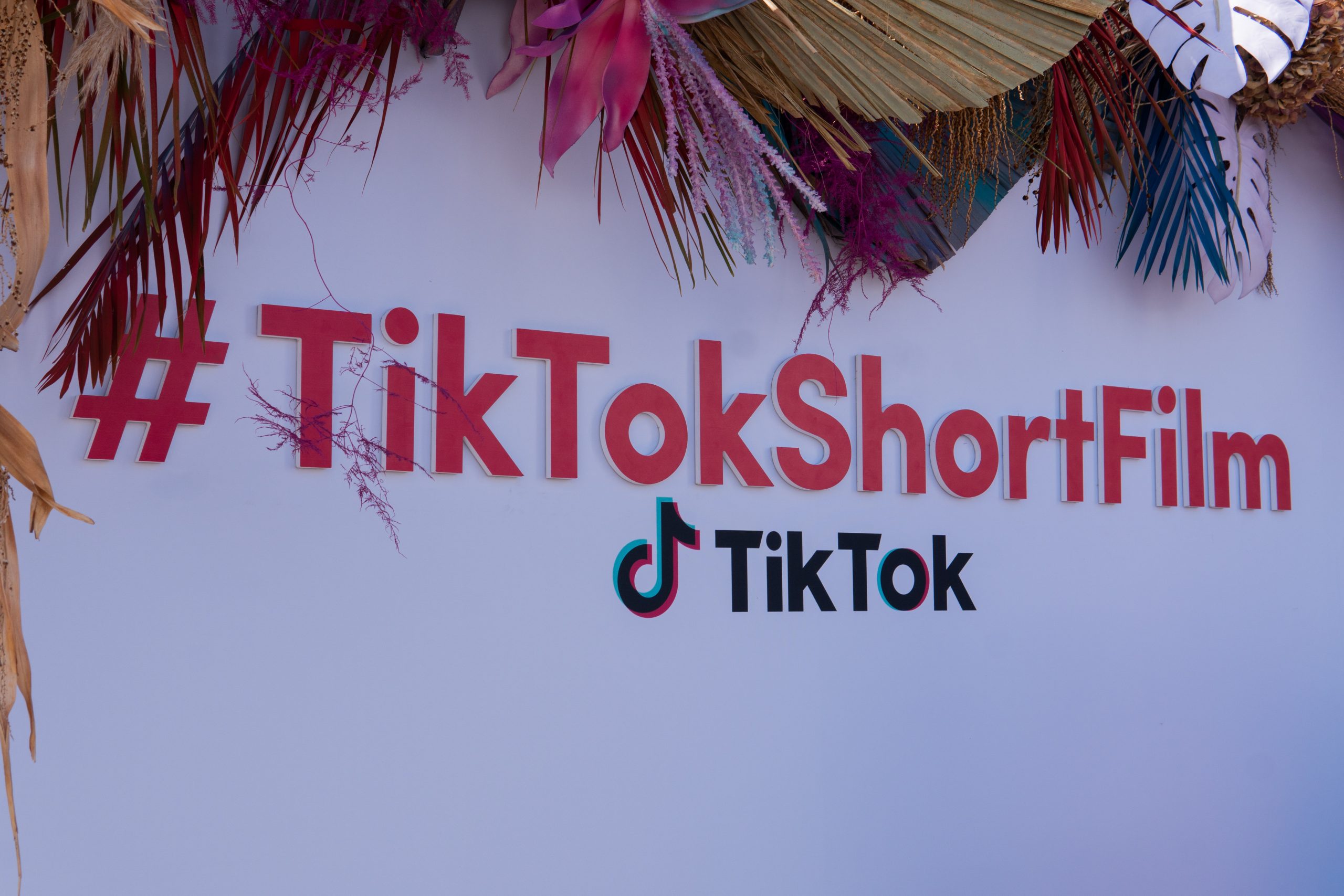TikTok is a social media platform that launched in 2016 and has rapidly ascended to prominence boasting over 1 billion active users as of 2021. Known for its short-form video content and user-friendly interface, TikTok has become a cultural phenomenon that transcends mere entertainment. One of the most intriguing aspects of TikTok is its ability to set trends through features like “For You Page,” hashtags and challenges. These trending features have not only captivated individual users but have also caught the attention of various industries most notably e-commerce.
The TikTok’s trending features exert a transformative impact on the e-commerce industry by influencing consumer behavior, reshaping marketing strategies and inspiring innovations in business models.
Tiktok’s trending features
TikTok’s unique algorithm and features set it apart as a trendsetting platform. The “For You Page” (FYP) serves as a personalized feed that uses machine learning to curate content based on user interaction . Hashtags categorize content and make it discoverable while challenges encourage user participation and content creation. These features are designed to engage users and keep them scrolling but their impact extends far beyond mere entertainment. For instance, the video below by Kmrobinsonlife shows the different aspects of the tiktok trending feature.
The virality of TikTok content can be attributed to its trending features. The FYP acts as a catalyst which rapidly disseminates popular content to a broad audience (Larvik, 2023). Hashtags and challenges amplify the concept by creating communal spaces for trends to flourish which matches the presentation of the concept of sharing news online by different platform where different actors pool news and attract multiple audience as presented by Martin and Dwyer (2019). For instance, a trending hashtag can garner millions of views in a matter of hours thus making it a hotbed for e-commerce opportunities. Such features create a feedback loop because as more people engage with a trend, it gains more visibility thereby attracting even more engagement and potential for monetization.
Impact on consumer behavior
Influence on consumer preferences
To commence discussing the impact of TikTok’s trending towards the e-commerce industry, TikTok’s trending features have a profound impact on shaping consumer preferences. The platform serves as a discovery engine where users encounter new products and brands often through viral challenges or hashtag campaigns (Darmatama & Erdiansyah, 2021).

For example, a beauty product can gain immense popularity if featured in a viral “unboxing” or “review” video. This kind of exposure not only raises brand awareness but also influences consumer preferences by associating products with social validation and trendiness. The FYP further personalizes this experience by tailoring product recommendations to individual tastes and thereby shaping consumer preferences more effectively.
Influence on purchase decisions
Also, on consumer behavior, the journey from discovery to purchase is significantly expedited on TikTok. Trending features act as powerful calls-to-action which drive users to make immediate purchasing decisions (Darmatama & Erdiansyah, 2021). That aligns with Benkler (2006) of how social production through social media transforms markets and freedom. For instance, limited-time hashtag challenges often create a sense of urgency which encourages users to buy before they miss out on a trending product. Additionally, the platform’s integration with e-commerce websites and in-app shopping features makes the transition from viewing to purchasing seamless and reduces friction in the buying process thereby increasing the likelihood of impulse purchases. In essence, TikTok’s trending features serve as both a discovery and decision-making tool for consumers thereby revolutionizing traditional e-commerce pathways.
Impact on marketing decisions
Leveraging TikTok marketing
Switching to the impact of TikTok trending on ecommerce, e-commerce businesses are increasingly leveraging TikTok’s trending features to amplify their marketing efforts. Hashtag challenges for example serve as interactive ad campaigns that not only boost brand visibility but also encourage user-generated content (UGC) (Julianti et al., 2023).
Brands often collaborate with influencers to kickstart these challenges thus ensuring a wider reach. Additionally, the use of TikTok’s native advertising options such as “Branded Effects” and “TopView” allows businesses to place their products directly into the trending ecosystem. The strategies are designed to capitalize on TikTok’s unique algorithm and user engagement patterns, making it a potent marketing platform.
Effective of strategies
Additionally, the effectiveness of TikTok-based marketing strategies is evident in key performance indicators like engagement rates, conversion rates and return on investment. Hashtag challenges often result in millions of user interactions which provide brands with valuable consumer data and insights. Moreover, the virality factor of TikTok ensures that even small brands can achieve widespread recognition in a short period thus leveling the playing field in the e-commerce industry. Studies have shown that TikTok campaigns often outperform traditional digital marketing strategies in terms of both reach and engagement (Julianti et al., 2023). Thus, TikTok’s trending features offer a highly effective and innovative approach to e-commerce marketing.
Impact on business model
Innovations in business models
Lastly, the TikTok trending feature also have impact on business models as the features are not just marketing tools; they are catalysts for innovation in e-commerce business models. The platform’s ability to drive rapid consumer engagement has led to the emergence of TikTok-first businesses which primarily use TikTok for product launches and customer engagement. These businesses often employ a direct-to-consumer (DTC) model which bypass traditional retail channels to interact directly with their audience. Furthermore, the platform’s analytics tools provide real-time consumer data that enables businesses to adapt their strategies swiftly. This agility and direct engagement are redefining what it means to be an e-commerce business in the digital age.
Rise on social commerce
Still on the impact on business model, the impact of TikTok’s trending features extends to the burgeoning field of social commerce. Social commerce refers to the integration of social media and e-commerce where the shopping experience is embedded within the social platform itself (Molinillo et al., 2018). TikTok has embraced this through features like Shop Now option and in-app storefronts, allowing users to make purchases without leaving the app. The seamless integration enhances the user experience and reduces the steps needed to convert interest into a sale. As a result, TikTok is not just a social media platform but a comprehensive social commerce ecosystem which sets the stage for the future of e-commerce. Below is a video demonstrating the Shop Now feature.
While TikTok’s trending features have undeniably revolutionized various aspects of e-commerce, critics argue that the platform’s influence may be overstated. One common criticism is in line with Couldry (2014) presentation on the myth of digital networks and is the transient nature of trends on TikTok which can result in short-lived spikes in consumer interest rather than sustained engagement (Alperstein, 2021). Additionally, skeptics point out that the platform’s young user demographic may not always translate into significant purchasing power thus limiting its impact on e-commerce sales
While it’s true that TikTok trends can be ephemeral, their short lifespan does not necessarily negate their impact. Brands can capitalize on these trends for quick sales and increased visibility which can be valuable in the fast-paced e-commerce landscape. As for the demographic limitations, recent data indicates a growing diversification in TikTok’s user base including older age groups with more disposable income (Larvik, 2023). Moreover, the platform’s influence on consumer behavior and marketing strategies extends beyond immediate sales thereby contributing to long-term brand building and customer engagement.
Conclusion
In conclusion, we have explored the transformative impact of TikTok’s trending features on the e-commerce industry by examining its influence on consumer behavior, marketing strategies and business models. While there are valid counterarguments concerning the transient nature of trends and demographic limitations, the overarching influence of TikTok in shaping the e-commerce landscape is undeniable. The platform serves as both a discovery engine and a decision-making tool for consumers, offers innovative marketing avenues for businesses and paves the way for the rise of social commerce. In essence, TikTok’s trending features are redefining the rules of e-commerce and are substantiated by academic research and real-world examples.
References
Alperstein, N. (2021). Exploring Issues of Social Justice and Data Activism: The Personal Cost of Network Connections in the Digital Age. Springer EBooks, 143–177. https://doi.org/10.1007/978-3-030-73804-4_5
Benkler, Y. (2006). The wealth of networks : how social production transforms markets and freedom (pp. 29–34). Yale University Press, , C.
Couldry, N. (2014). The myth of “us”: digital networks, political change and the production of collectivity. Information, Communication & Society, 18(6), 608–626. https://doi.org/10.1080/1369118x.2014.979216
Darmatama, M., & Erdiansyah, R. (2021). The Influence of Advertising in Tiktok Social Media and Beauty Product Image on Consumer Purchase Decisions. Proceedings of the International Conference on Economics, Business, Social, and Humanities (ICEBSH 2021), 570. https://doi.org/10.2991/assehr.k.210805.140
Haenlein, M., Anadol, E., Farnsworth, T., Hugo, H., Hunichen, J., & Welte, D. (2020). Navigating the New Era of Influencer Marketing: How to Be Successful on Instagram, TikTok, & Co. California Management Review, 63(1), 5–25. Sagepub. https://doi.org/10.1177/0008125620958166
Julianti, M., Mudjiarto, H., Nagatitha, P., Luwiha, L., & Astuti, W. (2023). TikTok’s Social Media Marketing Gives Strong Impact on Product Sales Increase. Journal of Economic, Religious, and Entrepreneurship (JoERE), 1(1), 31–38. https://doi.org/10.60046/joere.v1i1.24
Larvik, G. (2023). TikTok affordances and everyday nationalism : An exploration of #expat. Jyx.jyu.fi. https://jyx.jyu.fi/handle/123456789/87478
Martin, F., & Dwyer, T. (2019). Sharing news online : commendary cultures and social media news ecologies. Palgrave Macmillan.
Molinillo, S., Liébana-Cabanillas, F., & Anaya-Sánchez, R. (2018). A Social Commerce Intention Model for Traditional E-Commerce Sites. Journal of Theoretical and Applied Electronic Commerce Research, 13(2), 80–93. https://doi.org/10.4067/s0718-18762018000200107
Partijen. (2023, February 27). Drie partijen willen dat alle politici stoppen met TikTok. RTL Nieuws. https://www.rtlnieuws.nl/nieuws/nederland/artikel/5368456/politieke-partijen-tiktok-veiligheid-tweede-kamer-social-media



